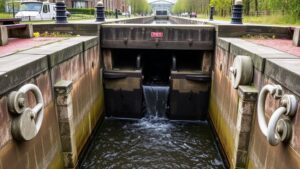Rediscovering Artifacts in Abandoned Community Fairground Locations
Introduction
The phenomenon of abandoned community fairgrounds reveals significant insights into societal values, cultural practices, and economic transformations over time. These sites, often neglected, hold artifacts and remnants of past communal experiences that can inform contemporary studies of local history and community identity. As urban areas continue to expand and evolve, the investigation of these sites can unveil layers of history that are vital for understanding the complexities of communal life.
The Historical Context of Fairgrounds
Fairgrounds have served as pivotal cultural hubs since their inception in the 19th century. Initially, they were venues for agricultural exhibitions and local competitions, often transforming into vibrant sites for entertainment, commerce, and community engagement. For example, the New York State Fair, established in 1841 in Syracuse, has evolved into one of the largest fairs in the nation, showcasing the agricultural heritage of New York State.
Economic Decline and Abandonment
As urban development accelerated, many fairgrounds were abandoned due to economic shifts and changing community needs. The decline of local businesses and changes in entertainment options contributed to the decrease in attendance. A notable example is the San Bernardino International Fairgrounds in California, which has remained unused since 2014, reflecting significant changes in the local economy.
Rediscovering Artifacts
Archaeological and ethnographic approaches can facilitate the rediscovery of artifacts within these abandoned sites. Artifacts include physical remnants such as rides, concession stands, promotional materials, and memorabilia that tell the story of the fairgrounds significance to the community.
Methodological Approaches
Several methodologies can be employed to investigate and document artifacts found at abandoned community fairgrounds:
- Field Surveys: Direct examination of the site to catalog and evaluate existing structures and materials.
- Remote Sensing: Utilizing drones and satellite imagery to identify land use changes and potential hidden artifacts.
- Interviews: Engaging with former fair participants and local historians to gather personal narratives and historical context.
Case Studies
Two fairgrounds that exemplify rich artifact recoveries include:
1. The Hudson Valley Fairgrounds, New York
Once a thriving site for local fairs, the Hudson Valley Fairgrounds has been meticulously studied. In 2018, archaeologists unearthed remnants of the original Ferris wheel and concession booths, providing insights into popular entertainment during its operational years from the 1950s to early 2000s.
2. The DeKalb County Fairgrounds, Illinois
This site, closed in 2010, has yielded artifacts such as vintage ticket stubs and event posters dating back to its founding in 1856. Such artifacts serve not only as historical records but also as essential markers of cultural identity within the region.
Implications for Community Development
The rediscovery of artifacts from abandoned fairgrounds carries implications for community development. Engaging with these sites may foster a sense of identity and pride among local populations. For example, the city of DeKalb has partnered with local historians to create exhibitions highlighting the fairgrounds rich history, which in turn strengthens community bonds.
Conclusion
Rediscovering artifacts in abandoned community fairground locations not only contributes to historical knowledge but also promotes community engagement and identity. The application of diverse methodologies enhances the understanding of these sites, allowing for a comprehensive exploration of local heritage. As urban landscapes continue to shift, the importance of preserving and studying these abandoned sites becomes increasingly vital for future generations.
References
- Adams, J. R. (2020). Cultural Heritage and Abandonment: A Study of Fairgrounds in America. Journal of Urban History.
- Sullivan, M. L. (2019). Local Heritage: The Role of Fairgrounds in Community Identity. Illinois Historical Journal.
- Keller, P. R., & Wexler, T. (2018). Archaeological Perspectives on Abandoned Fairgrounds: Artifacts and Memories. American Antiquity.



